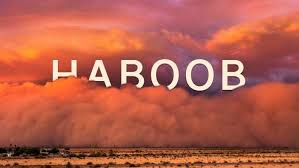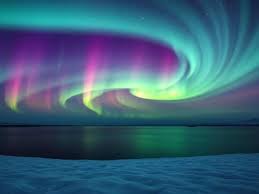
Northern Lights Forecast
Introduction
Few natural spectacles captivate the human imagination like the Northern Lights, also known as the Aurora Borealis. These luminous ribbons of green, purple, and red lights shimmer across the polar skies, enchanting travelers, scientists, and storytellers alike. In recent years, thanks to technological advances, it has become possible to forecast aurora activity much like we forecast the weather. But unlike a simple rain prediction, forecasting the Northern Lights involves a complex interplay of solar physics, atmospheric science, and geomagnetic modeling.
This article provides a comprehensive 4000-word exploration of the Northern Lights forecast. We will discuss the science behind the aurora, how predictions are made, what tools and indices are used, the best regions to observe them, and tips for aurora chasers. Along the way, we’ll also explore cultural significance, common myths, and the future of aurora forecasting.
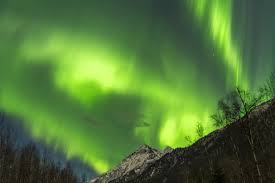
1. The Science of the Northern Lights
What are the Northern Lights?
The Northern Lights are natural light displays caused by the interaction of charged solar particles with Earth’s magnetic field and atmosphere. When these particles collide with gases like oxygen and nitrogen, they release energy in the form of glowing light.
- Green lights come primarily from oxygen at lower altitudes.
- Red lights appear when oxygen is excited at higher altitudes.
- Purple and blue hues often result from nitrogen interactions.
The Role of the Sun
Auroras are fundamentally linked to solar activity. The Sun constantly emits solar wind—streams of charged particles. When intense bursts, such as solar flares or coronal mass ejections (CMEs), hit Earth, they trigger geomagnetic storms that intensify auroral activity.
Earth’s Magnetic Shield
Earth’s magnetic field acts like a funnel, guiding charged particles toward the polar regions. This explains why auroras are typically confined to the Auroral Oval, a ring around the poles.
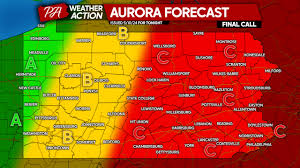
2. Why Forecasting Matters
Forecasting the Northern Lights is crucial for:
- Travelers: People planning aurora tourism trips to destinations like Norway, Iceland, Alaska, and Canada.
- Photographers: Capturing the aurora requires precise timing.
- Airlines and Satellites: Strong geomagnetic storms can disrupt communications.
- Scientists: Monitoring solar activity contributes to space weather research.
3. The Basics of Aurora Forecasting
Time Scales of Forecasts
Aurora forecasts come in three general forms:
- Long-term predictions (months to years): Based on the 11-year solar cycle. Peak auroras occur during solar maximum.
- Medium-term forecasts (days to weeks): Relies on monitoring solar wind streams and coronal holes.
- Short-term forecasts (minutes to hours): Uses real-time solar wind data from satellites like NOAA’s DSCOVR.
Key Indices Used in Forecasts
- KP Index: Ranges from 0 (quiet) to 9 (extreme storm). A KP of 5+ usually means auroras are visible outside the Arctic Circle.
- Solar Wind Speed: Higher speeds increase aurora activity.
- Bz Component: A southward magnetic field (negative Bz) increases the chance of auroras.
- Dst Index: Measures geomagnetic storm intensity.
4. Tools and Resources for Aurora Forecasts
Websites and Services
- NOAA Space Weather Prediction Center (SWPC)
- Aurora Service Europe & North America
- Alaska Geophysical Institute Forecast
- AuroraWatch UK
Apps for Travelers
- My Aurora Forecast
- SpaceWeatherLive
- Aurora Alerts
These tools provide real-time alerts, 3-day predictions, and maps showing auroral visibility.
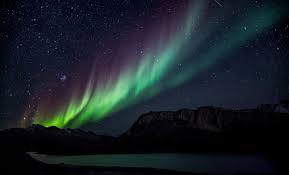
5. Regions for Aurora Watching
Top Global Destinations
- Tromsø, Norway
- Reykjavík, Iceland
- Fairbanks, Alaska
- Yellowknife, Canada
- Rovaniemi, Finland
The Aurora Oval
Most forecasts show the Auroral Oval, which shifts with geomagnetic activity. At higher KP values, the oval expands southward, making auroras visible in areas like Scotland, Northern U.S., and even Central Europe.
6. Factors That Affect Aurora Visibiliable
- Geomagnetic Storm Strength: Stronger storms = brighter auroras.
- Local Weather: Clear skies are essential; cloud cover ruins visibility.
- Light Pollution: Rural areas far from cities provide the best conditions.
- Season and Darkness: Best seen in winter months with long nights.
7. The Solar Cycle and Long-Term Forecasts
The Sun operates in an 11-year cycle of rising and falling activity. During solar maximum, auroras are more frequent and visible at lower latitudes. The current cycle (Solar Cycle 25) began in 2019 and is expected to peak around 2025–2026, meaning aurora activity will be particularly strong in the coming years.
8. Myths vs. Reality in Aurora Forecasts
- Myth: The Northern Lights can be predicted months in advance with certainty.
Reality: Long-term forecasts give trends, but precise timings are only possible hours ahead. - Myth: Auroras only appear in green.
Reality: They come in multiple colors depending on atmospheric gases and altitude. - Myth: Only the Arctic sees auroras.
Reality: Strong storms can push auroras into mid-latitudes, like the U.S. Midwest.
9. Aurora Forecasting for Travelers
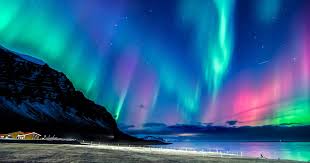
How to Plan a Trip
- Check aurora season (usually September–April).
- Use 3-day and real-time forecasts before traveling.
- Choose rural locations with dark skies.
Practical Tips
- Stay flexible with travel plans.
- Book multiple nights to increase chances.
- Bring warm clothing and photography gear.
10. Aurora Photography and Forecasts
For photographers, forecasting is critical:
- Use apps with real-time alerts.
- Look for KP 4+ in your region.
- Time exposures to match aurora movement.
- Moon phase matters—new moons provide darker skies.
11. Cultural Significance of the Northern Lights
Auroras have inspired myths across cultures:
- Norse mythology: Believed to be reflections of Valkyries’ armor.
- Inuit legends: Spirits playing ball with a walrus skull.
- Finnish folklore: Created by foxes running across the snow.
Today, forecasts bring a scientific lens to these age-old stories.
12. Aurora Forecasts and Technology
Modern forecasting relies on:
- Satellites (e.g., DSCOVR, ACE, SOHO) monitoring solar wind.
- Ground-based magnetometers tracking Earth’s magnetic field.
- Supercomputers modeling space weather.
AI and machine learning are increasingly used to improve accuracy.
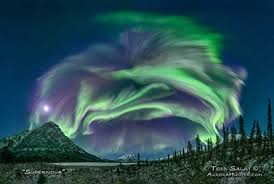
13. Aurora Forecast Challenges
- Solar events can be unpredictable.
- Forecasts are probabilistic, not guarantees.
- Small errors in Bz readings can change predictions dramatically.
14. Case Study: Major Aurora Storms
- March 1989 storm: Caused a 9-hour blackout in Quebec.
- October 2003 Halloween storms: Auroras seen as far south as Texas.
- May 2024 storms (Solar Cycle 25): Brought widespread auroras to mid-latitudes worldwide.
These events highlight the importance of forecasts not only for aurora chasers but also for infrastructure protection.
15. The Future of Aurora Forecasting
With improving technology, forecasts are becoming more accurate:
- Satellites at Lagrange points provide early warnings.
- AI-driven models will enhance short-term predictions.
- Integration with weather apps will make aurora alerts more mainstream.
Conclusion
The Northern Lights are a breathtaking reminder of the dynamic relationship between Earth and the Sun. While predicting them is far more complex than forecasting rain, modern science has made it possible to anticipate aurora displays with increasing accuracy. For travelers, photographers, scientists, and everyday dreamers, the Northern Lights forecast is the key to unlocking one of nature’s most spectacular shows.
As we approach the peak of Solar Cycle 25, aurora activity will intensify, providing some of the best viewing opportunities in decades. With the right tools, knowledge, and a bit of luck, the sky itself becomes a canvas painted by solar winds—an awe-inspiring spectacle guided by science, yet forever magical in its beauty.


